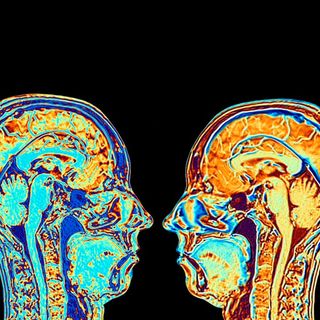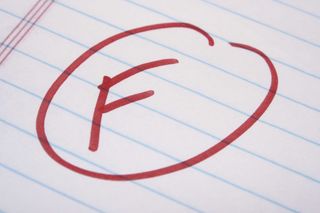
We Learn Best When We Fail 15% of the Time, Study Suggests
A certain amount of failure is proof we’re being challenged.

Straight As may be the wrong goal, suggests a new study that has determined learning is optimized when we fail 15% of the time.
Interestingly, it’s not a new concept — just a specific calculation of the “zone of proximal development,” a theory developed in the 1930s by psychologist Lev Vygotsky to describe the sweet spot of learning: when a student is faced with a challenge just beyond their ability to solve it alone. It’s a ‘Goldilock’s zone’ that society has intuited for a long time, across a variety of domains — for instance, this just-outside-one’s-grasp learning is “observable in the nearly universal ‘levels’ feature in video games, in which the player is encouraged, or even forced, to a higher level of difficulty once a performance criterion has been achieved,” the authors write.
The ratio, developed by researchers at the University of Arizona, Brown University, the University of California, Los Angeles, and Princeton University, was tested on computers via machine learning and applied to previous research looking into how animals learn. In both cases, machines and animals learned the fastest when difficulty was such that the subject would be right 85% of the time and be wrong 15%.
But researchers say their finding is likely applicable to humans, too, particularly during perceptual learning, in which exposure to patterns of experiences and examples help us develop an almost instinctive knowledge. It’s a natural, inherent and almost unconscious method of human learning that is slowly seeping into classrooms to replace, or at least complement, traditional top-down instruction.
Related on The Swaddle:
Education of the Future Is Not About Knowledge
“I find that often students will try to solve problems by doing only what they’ve been told to do, and if that doesn’t work they give up,” Joe Wise, a physics instructor at New Roads School, the location of a 2009 study on perceptual learning methods, told the New York Times in 2011. With the perceptual learning modules tested in the study, “they’re forced to try what makes sense to them and to keep trying. The brain is very good at sorting out patterns if you give it the chance and the right feedback.”
The failure-to-success ratio, as well as the “keep trying” result Wise observed in the 2009 study, speaks to a broader movement within education that acknowledges failure, and dealing with it, as integral to learning. Research by Carol Dweck and Angela Duckworth have popularized the concepts of “growth mindset” and “grit” — the former, the belief that qualities, knowledge, and skills can be acquired with strategic effort, and that failure is merely part of the learning process, and the latter the practice of hard work and perseverance through failure to achieve improvement. Both have been linked to better performance in school and in the workplace.
Despite this growing acknowledgment of the importance of failure, schools and society continue to celebrate high achievers most — the straight-A student, the perfect attendance record, the top-performer in the workplace. While esoteric calculations and studies reveal the importance of failure, and society pays lip-service to it, there is little commemoration of failure as a critical step in learning. Changing that could have a critical effect: According to research out of the Education for Persistence and Innovation Center at Columbia University, teaching students about the struggles and failures of so-called geniuses — such as Albert Einstein, Marie Curie, or Isaac Newton — can lead to improved learning.
While the newly calculated 85:15 succcess-to-failure ratio won’t change society’s value for perfection overnight, it does add to evidence that failure is as important as success — and may make that B-student feel like they’re just as good as that straight-A one. After all, “if you are taking classes that are too easy and acing them all the time, then you probably aren’t getting as much out of a class as someone who’s struggling but managing to keep up,” Robert Wilson, an assistant professor of psychology and cognitive science at the University of Arizona and lead author of the study, said in a press release.
Liesl Goecker is The Swaddle's managing editor.
Related


Even Conservative Use of Antibiotics Has Negative Implications on Children’s Health: Study
